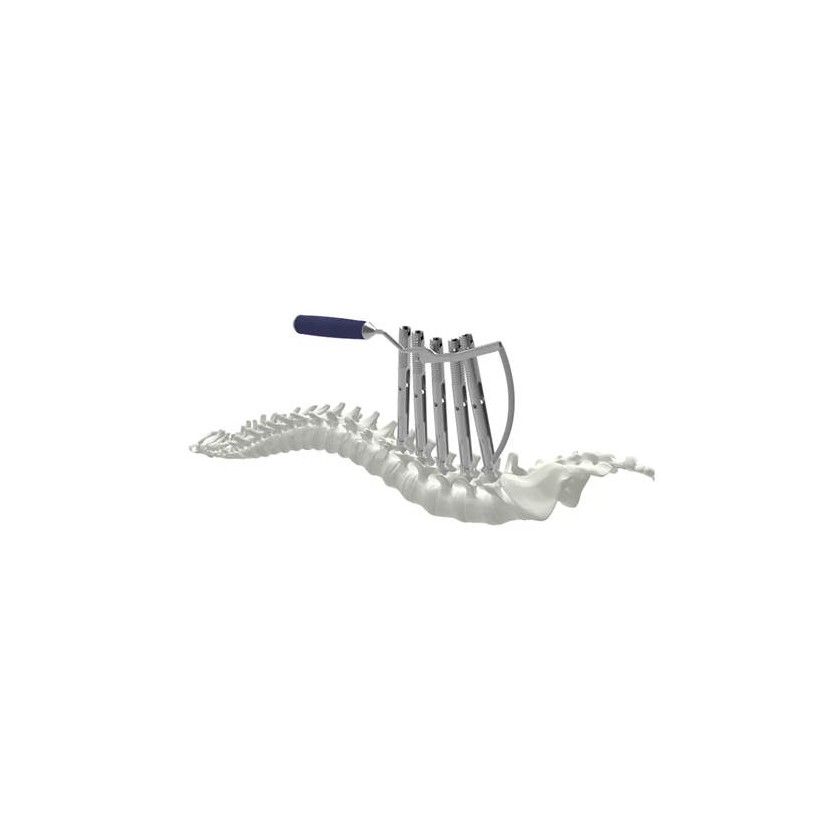Model Number: TI-5.5 / 6.0
Material: Titanium alloy
Application:Posterior internal fixation of thoracolumbar, lumbosacral, coccygeal and iliac
Compatible Instruments: ADB02
This system product consists of pedicle screws, titanium rods, set screws, and other components. The pedicle screw is designed with a through cannulation along the central axis of the screw body. This cannulated design enables minimally invasive percutaneous pedicle screw internal fixation technology. It offers advantages including reduced surgical blood loss, minimized muscle and soft tissue dissection, alleviated postoperative pain, faster recovery, smaller incisions and scars, and shorter hospital stay. Moreover, it preserves the benefits of satisfactory reduction and strong fixation from internal fixation surgery. Patients can ambulate early, which facilitates rehabilitation training and enables earlier return to work.
Spinal minimally invasive surgery is characterized by precise operation, minimally invasive treatment, rapid recovery, and small traumatic area.
Primary Function
The main purpose of this product is to restore vertebral anatomical position and physiological curvature, while bearing partial or full physiological loads, in patients with lumbar diseases such as vertebral fractures, lumbar disc herniation, lumbar spinal stenosis, and spondylolisthesis. Specifically, through a posterior surgical approach, pedicle screws are implanted into the vertebral bodies via the pedicles of the thoracolumbar vertebrae. Manipulation of the pedicle screws enables distraction, compression, lifting, and reduction of the vertebrae, thereby restoring vertebral anatomical position and spinal physiological curvature. The rod can be passed subcutaneously into the U-shaped slot of the pedicle screws using rod insertion instruments and locked with set screws, connecting and fixing the rod to the pedicle screws. This forms a stable structure that partially or fully bears the biological loads at the affected spinal segment, providing a stable biomechanical environment for fusion and fixation of the thoracolumbar spine.
All Spinal fusion implants components are made of TC4 titanium alloy material.




